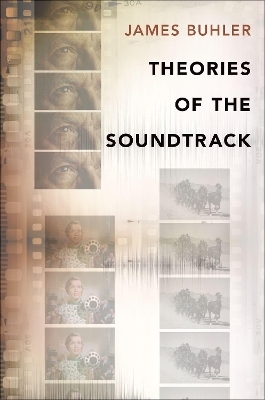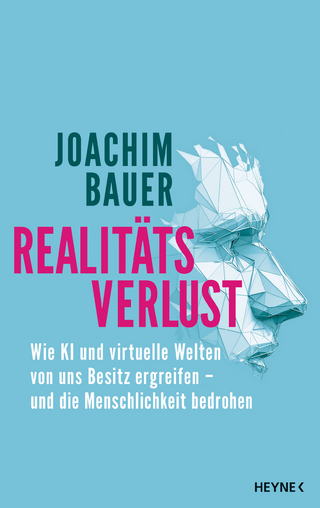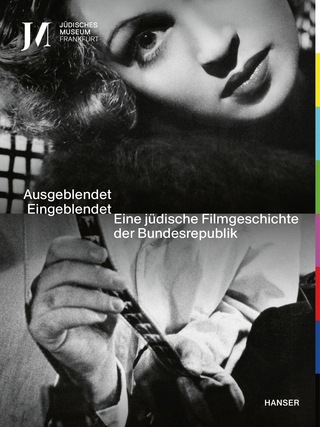
Theories of the Soundtrack
Oxford University Press Inc (Verlag)
978-0-19-937108-2 (ISBN)
A theory of the soundtrack is concerned with what belongs to the soundtrack, how a soundtrack is effectively organized, how its status in a multimedia object affects the nature of the object, the tools available for its analysis, and the interpretive regime that the theory mandates for determining the meaning, sense, and structure that sound and music bring to film and other audiovisual media. Beyond that, a theory may also delineate the range of possible uses of sound and music, classify the types of relations that films have used for image and sound, identify the central problems, and reflect on and describe effective uses of sound in film.
This book summarizes and critiques major theories of the soundtrack from roughly 1929 until today. Rather than providing an exhaustive historical survey, it sketches out the range of theoretical approaches that have been applied to the soundtrack since the commercial introduction of the sound film. The basic theoretical framework of each approach is presented, taking into account the explicit and implicit claims about the soundtrack and its relation to other theories. The organization is both chronological and topical, the former in that the chapters move steadily from early film theory through models of the classical system to more recent critical theories; the latter in that the chapters highlight central issues for each generation: the problem of film itself, then of image and sound, of adequate analytical-descriptive models, and finally of critical-interpretative models.
Jim Buhler is a Professor of Music Theory and Director of the Center for American Music at the University of Texas and lead author of Hearing the Movies: Music and Sound in Film History (2009, 2014).
Chapter 1: Introduction
Five Vignettes of Early Sound Film
The Hybridity of Sound Film
Sound Film, an Audiovisual Medium
Film Sound and "Occult Aesthetics"
This Volume
Chapter 2: Early Theories of Sound Film
Introduction: The Specificity of the Sound Film
The Statement on Sound and the Concept of Counterpoint
Sergei Eisenstein and Counterpoint
Vsevolod Pudovkin and Asynchronous Sound
The Case of Deserter
Perceptual Realism
Béla Balázs and the Physiognomy of the Voice
Rudolf Arnheim and the Unity of Sound
Harry Potamkin and the Compound Cinema
Chapter 3: Theories of the Classic Sound Film: Grammars and Typologies
Introduction
Sergei Eisenstein and Vertical Montage
Modes of Synchronicity
Aaron Copland and the Functions of Film Music
Functions
Reservations
Hanns Eisler and Theodor W. Adorno and Critical Theory
Contra Eisenstein
The Negative Thesis: Sham Identity
Bad Habits
The Classical System and the Typological Analysis
Raymond Spottiswoode and Film Grammar
Siegfried Kracauer and the Types of Cinematic Sound
Roger Manvell and John Huntley and "Functional" Music
On the Difference between Realistic and Nonrealistic Music
Chapter 4: Language, Semiotics, Deleuze
The Linguistic Analogy
Jean Mitry and Language and Rhythm
Semiotics of Film/Semiotics of Music
Christian Metz and Aural Objects
Gilles Deleuze and the Movement-Image
Zero-Point: Perception-Image
Firstness: Affection-Image
First Intermediary Stage: Impulse-image
Secondness: Action-Image
Large Action Form
Small Action Form
Second Intermediary Stage: Reflection-image
Thirdness: Relation-Image
Chapter 5: Neoformalism and Four Models of the Soundtrack
Introduction: Semiotics and Formalism
Neoformalism
Kristin Thompson and the Analytical Approach
David Bordwell and the Music(ologic)al Analogy
Noël Carroll and Modifying Music
Formal Models of Music and Film
Kathryn Kalinak and Captain Blood
A Working Model of Film Music
General Considerations
Explicit Relations of Music to Narrative
Implicit Relations of Music to Narrative
Combining Implicit and Explicit Relations of Music to Narrative
Nicholas Cook and Multimedia Systems
David Neumeyer and Vococentrism
Annabel Cohen and the Congruence-Association Model
Chapter 6: Narratology and the Soundtrack
Introduction
Narratology and Film
Narratology and the Soundtrack
Claudia Gorbman and Narrative Functions
Sarah Kozloff and the Narrative Functions of Dialogue
Michel Chion and the Audiovisual Scene
Giorgio Biancorosso and the Cinematic Imagination
Robynn Stilwell and the Fantastical Gap
Jeff Smith and Film Narration
Ben Winters and the Nondiegetic Fallacy
Guido Heldt and Levels of Narration
Music and Focalization
Focalization in Casablanca
Conclusion
Chapter 7: Critical Theory and the Soundtrack
Introduction
Hermeneutics of Suspicion
Ideology of Content (1): Topic Theory
Ideology of Content (2): The Table of Knowledge and Communicative Efficiency
Musical Topics: A Postcolonial Critique
Ideology of System
Ideology of Apparatus
Gender, Sexuality, and the Soundtrack
Soundtrack Theory and Feminist Theory
Soundtrack Theory and Queer Theory
Queering Asynchronous Sound
Queerness and Spectacle
Suddenly, Last Summer (1959) and the Economy of Sacrifice
The Hours (2002) and Sacrificial Inversion
Chapter 8: Psychoanalysis, Apparatus Theory, and Subjectivity
Introduction
The Appareil
Jean-Louis Baudry and the Basic Cinematographic Apparatus
Jean-Louis Comolli and Technique and Ideology
Mary Ann Doane and the Ideology of Sound Editing
Rick Altman and the Heterogeneity of Sound
James Lastra and Representational Technology
Music and the Appareil
The Dispositif
Jean-Louis Baudry and the Dispositif
Jean-Louis Comolli and the Dispositif
Christian Metz and Enunciation
Dispositif and Suture
Mary Ann Doane and the Fantasmatic Body
Pascal Bonitzer and the Voiceover and Voice-off
Suture and the Soundtrack
Jeff Smith and the Critique of Psychoanalytical Model of Film Music
Neo-Lacanian Theory
The Gaze and the Voice
Michel Chion and "There is No Soundtrack"
Mimetic Synchronization and the Sexual Relation
Michel Chion and Rendering
Chapter 9: Theories of the Digital Soundtrack
Introduction
The Ontological Divide
Animated Image, Stylized Sound: The Radical Effects
of Digital Rendering
Music, Sound Design, and Digital Audio Production
Theories of Stereophonic Sound
Affective Intensities, the Withering of the Leitmotif,
and the Withdrawal of Identity
Postclassical Cinema and the Fraying of Narrative
Conclusion
Bibliography
Index
| Erscheinungsdatum | 20.10.2018 |
|---|---|
| Reihe/Serie | Oxford Music/Media Series |
| Zusatzinfo | 6 charts |
| Verlagsort | New York |
| Sprache | englisch |
| Maße | 231 x 155 mm |
| Gewicht | 476 g |
| Themenwelt | Kunst / Musik / Theater ► Film / TV |
| Kunst / Musik / Theater ► Musik | |
| Sozialwissenschaften ► Kommunikation / Medien ► Medienwissenschaft | |
| ISBN-10 | 0-19-937108-3 / 0199371083 |
| ISBN-13 | 978-0-19-937108-2 / 9780199371082 |
| Zustand | Neuware |
| Haben Sie eine Frage zum Produkt? |
aus dem Bereich


